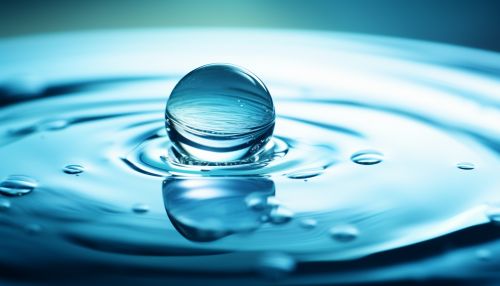The Role of Nanotechnology in Enhancing Water Treatment Processes
Introduction
Nanotechnology, a field that deals with structures and materials on the scale of nanometers, has been increasingly applied to various sectors, including the water treatment industry. This article explores the role of nanotechnology in enhancing water treatment processes, focusing on the principles, applications, benefits, and challenges of this innovative approach.


Principles of Nanotechnology in Water Treatment
Nanotechnology in water treatment involves the use of nanoparticles, nanostructured materials, and nanoscale processes to improve the efficiency and effectiveness of water purification. The unique properties of nanomaterials, such as high surface area to volume ratio, reactivity, and tunability, make them ideal for various water treatment applications.
Nanoparticles
Nanoparticles are particles with dimensions typically less than 100 nanometers. They exhibit unique physical and chemical properties due to their small size and high surface area to volume ratio. These properties make nanoparticles effective in adsorbing and removing contaminants from water.
Nanostructured Materials
Nanostructured materials, such as nanofiltration membranes and nanostructured catalysts, are materials that have been engineered at the nanoscale to enhance their performance in water treatment processes. These materials can provide superior filtration and disinfection capabilities compared to conventional materials.
Nanoscale Processes
Nanoscale processes refer to reactions and interactions that occur at the nanoscale. These processes, such as photocatalysis and nanoscale zero-valent iron (nZVI) reactions, can be harnessed to degrade or remove pollutants from water.
Applications of Nanotechnology in Water Treatment
Nanotechnology has been applied in various stages of water treatment, including pre-treatment, primary treatment, secondary treatment, and advanced treatment.
Pre-Treatment
In the pre-treatment stage, nanotechnology can be used to improve the removal of suspended solids, colloids, and other large particles from water. For instance, magnetic nanoparticles can be used to enhance the efficiency of coagulation and flocculation processes.
Primary Treatment
During primary treatment, nanotechnology can enhance the removal of organic matter, nutrients, and microorganisms from water. For example, nanostructured catalysts can enhance the efficiency of biological treatment processes, while nanofiltration membranes can improve the removal of nutrients and microorganisms.
Secondary Treatment
In the secondary treatment stage, nanotechnology can be used to further remove residual pollutants from water. For instance, photocatalytic nanoparticles can be used to degrade residual organic pollutants, while nanoscale zero-valent iron (nZVI) can be used to remove residual inorganic pollutants.
Advanced Treatment
In the advanced treatment stage, nanotechnology can be used to achieve high-quality water suitable for reuse or discharge. For example, nanofiltration membranes and nanostructured catalysts can be used to remove trace organic contaminants and disinfection by-products.
Benefits of Nanotechnology in Water Treatment
The application of nanotechnology in water treatment offers several benefits, including improved efficiency, versatility, and sustainability.
Improved Efficiency
Nanotechnology can enhance the efficiency of water treatment processes by improving the removal of pollutants, reducing energy consumption, and increasing water recovery.
Versatility
Nanotechnology offers versatility in water treatment, as it can be applied to a wide range of pollutants, water types, and treatment stages.
Sustainability
Nanotechnology can contribute to the sustainability of water treatment by enabling the reuse of water, reducing the use of chemicals, and minimizing waste generation.
Challenges and Future Directions
Despite its potential, the application of nanotechnology in water treatment also faces several challenges, including the high cost of nanomaterials, potential environmental and health risks, and regulatory issues. Future research should focus on addressing these challenges and further exploring the potential of nanotechnology in water treatment.
